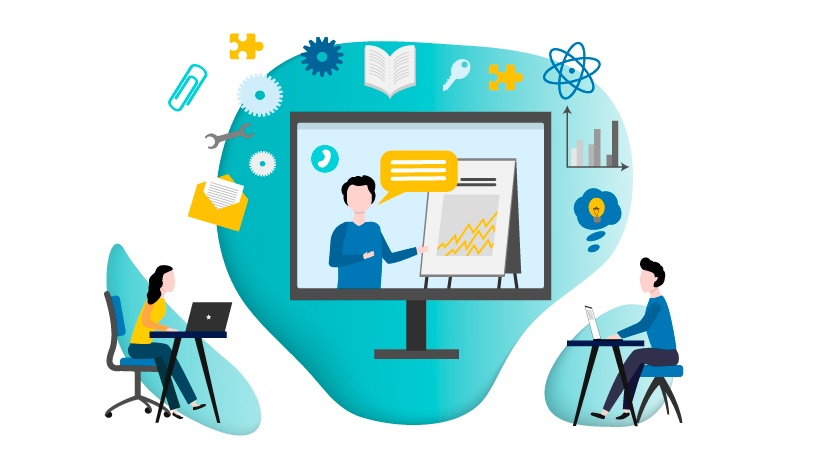Things Schools Should Consider Before Going Online
One of the biggest industries to experience a fallout because of the COVID-19 lockdown is the education industry across the globe. From primary schools and high schools to universities and private educational institutions, all have seen a sudden halt in their operations. Needless to say, the success of such educational institutions depends on them having a captive audience of 30-40 in a controlled environment. Because that model is now a recipe for a health disaster, the institutions are now opting for alternative means of conducting classes.
Well, "eLearning, video-based learning, and the like are already available" is what you would say. That’s true, but the world is not ready to move all the content and learning strategies of primary, higher secondary, and graduate education to a completely online model.
Although there are some massive improvements in that space with resounding success—universities are offering online degrees, private organizations, such as Lynda (now LinkedIn), Udemy, Pluralsight, BYJU’s, Khan Academy, edX, Coursera, and so on are able to reach a certain demographic—they can’t replace the existing classroom schooling and college education system; and now, because of the COVID-19 situation, they are in a bit of a pickle.
What Is Happening Now?
Many institutions around the world resorted to conducting the classes online by using popular conferencing tools (and Zoom conferencing seems to have zoomed ahead of everybody else in that race). Alas, while these institutions have been able to conduct classes, the results have been disastrous with many educators complaining that:
- They are not being able to moderate the learners effectively— with 30 different mini video screens, around 10% of the instructor’s time is spent identifying who responded to what.
- Learning strategies that were effective in a classroom are just not working in an online environment—trying to form groups for discussions or role-play eats up 15% of your class time.
- Assessing the effectiveness of learning is proving to be a daunting task. Instructors are spending 5% additional time trying to ensure if the learning has been effective.
The reason why educators are having unfavorable results is because they’re trying to force-fit something when there are effective ways to conduct the same.
The Alternative?
Educators should stop using the classroom content as is and think about redesigning their content in a way that suits the online delivery medium. In other words, the learning strategies should be such that they take maximum advantage of the online teaching environment and blend it with their current classroom strategies.
It’s easier said than done because the teaching strategies can change based on the conferencing tool you are using and the features available in the tool. Also, it is a fact that all educators may not be tech-savvy and many find adapting to new-age technology as an onerous activity.
What Exactly Do I Need To Do?
If you or your educational institution is in a situation where you need to move from a physical classroom training environment (otherwise known as Instructor-Led Training or ILT) to a virtual classroom environment (or VILT), there are a bunch of things you need to be sure of and figure out before you do that. Some of them are:
- The appropriate hardware and software infrastructure—one size does not fit all.
- The appropriate virtual learning strategies—again, depending on the nature of the content, the strategies change, so don’t believe hearsay.
- What is the timeline for having everything in place before you can start your online classes?
- What is the budget for making such a move?
What About The Educators?
The teaching staff is probably going to be the one who will experience the biggest change. The reason being that you might be deciding on a plethora of changes in terms of the virtual environment, the virtual teaching strategies, and the unique teaching patterns. However, when it all goes into the hands of the teachers they are probably going to feel like a fish out of water. That's because they are at their best inside a classroom holding the rapt attention of their students with their eye contact and hand gestures—all of which are missing in this medium. However, there are a few things you can do to ease them into the new normal:
- Involve them early on in the decision-making process. They will be your early indicators of success.
- Ensure that they participate in the content conversion process. They need to be completely involved if there are changes in the learning strategies, learner engagement strategies, presentation strategies, assessment strategies, and so on.
- Give them sufficient time to prepare and adapt to the revised content and the new virtual teaching environment. Teachers are like learners, in this case, each one has their own pace.
- Conduct a dry run or a mock teaching session. This will not only make the teachers comfortable but also help you iron out any technology wrinkles.
- Despite all this, in the first few sessions, all hell will break loose. Ensure that you have technical and teaching support personnel on standby.
Conclusion
While it appears daunting, once you know exactly what needs to be done, it isn’t all that difficult. And, help is an arm’s length away because there are many learning consultants who can assess your current training endeavor and the size of the learning audience that you need to address and suggest not only the technology that you can adopt but also the specific learning strategies that will help you make an effective transition from your physical classroom training (ILT) to a virtual classroom (VILT).
